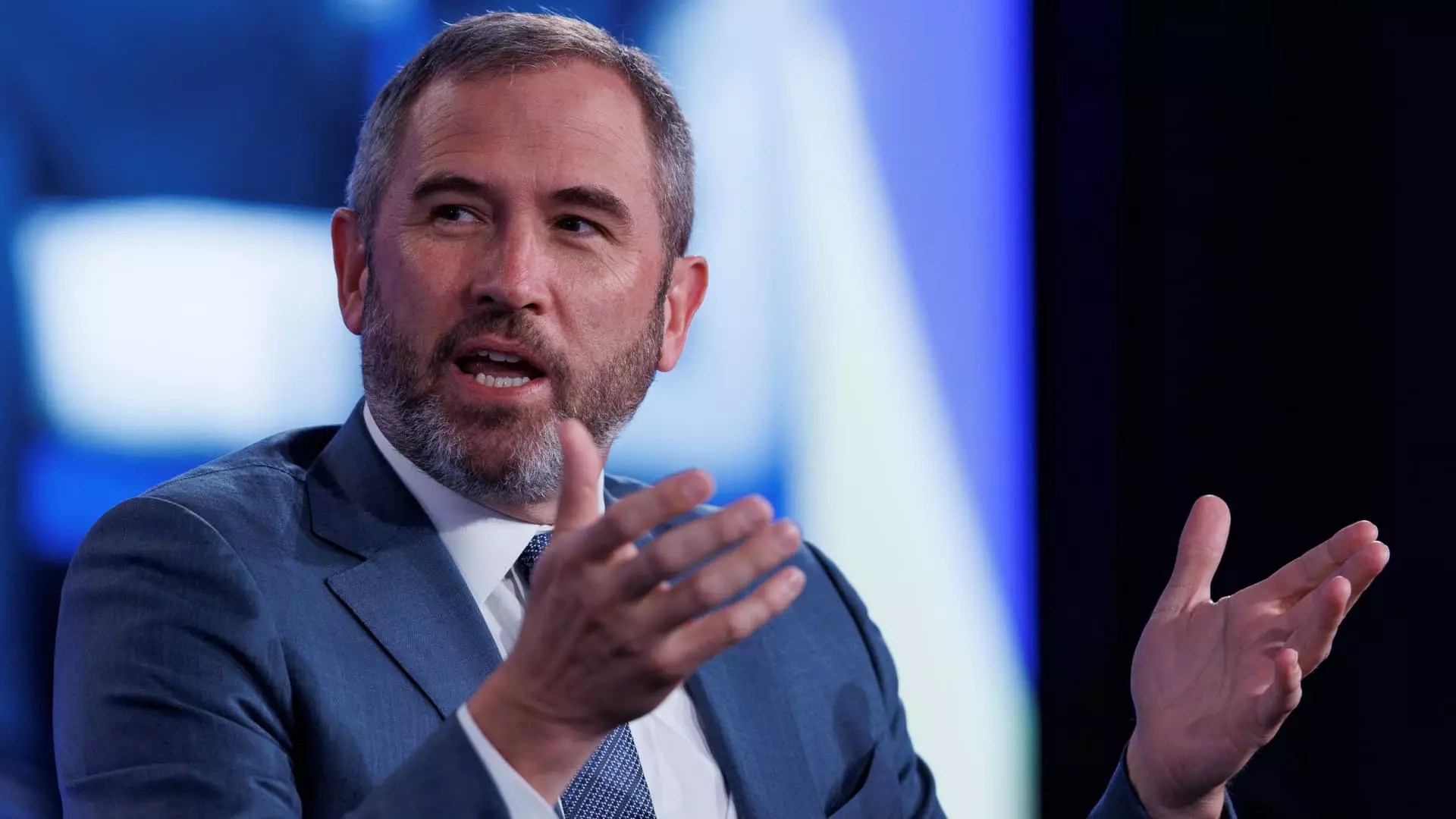As the United States approaches another pivotal election season, the implications for the cryptocurrency sector are profound, stirring a mix of skepticism and optimism among industry leaders. Brad Garlinghouse, the CEO of Ripple Labs, has voiced his thoughts on the current state of crypto regulation, emphasizing that regardless of the election outcome, a more favorable environment for crypto innovation is on the horizon. His insights reveal the complexities of navigating a rapidly evolving regulatory landscape shaped by intense political currents.
In recent years, the U.S. financial regulatory framework has faced scrutiny, particularly concerning its treatment of cryptocurrencies. Ripple, credited with revolutionizing global payments through its XRP token, found itself embroiled in a significant legal battle with the U.S. Securities and Exchange Commission (SEC). The lawsuit, which began in 2020, accused Ripple of conducting unregistered securities offerings. However, a landmark ruling last year concluded that the XRP token does not constitute a security when sold to retail investors on exchanges, marking a rare win for the crypto industry amid a backdrop of regulatory hostility.
Garlinghouse’s assertion that a more pro-crypto Congress is on the cusp of emergence reflects a broader sentiment among crypto enthusiasts fatigued by regulatory overreach. He highlighted that approximately 95% of Ripple’s operations transpire beyond U.S. borders—a stark reminder of how rigorous domestic regulation has positioned the U.S. as a less favorable environment for cryptocurrency firms. The palpable sense of urgency around forming a more harmonious regulatory framework is critical if the U.S. aims to maintain its competitive edge on the global stage.
Garlinghouse’s comments reveal an interesting dichotomy as he noted the emerging partisan landscape that surrounds cryptocurrency regulation. Historically, the crypto industry has enjoyed a semblance of bipartisan support, but recent developments suggest that affiliations may increasingly characterize the ongoing discourse around regulatory policies. For instance, Garlinghouse’s reference to his purple tie insinuates a bridging of the gap between Republican support—exemplified by Donald Trump’s self-proclaimed title as the “crypto president”—and the more measured approach adopted by the Biden administration.
He acknowledged Vice President Kamala Harris’s ambiguous stance on crypto, noting her background in Silicon Valley as a potential asset for the tech-forward approach that cryptocurrencies embody. However, the apprehension expressed by pro-crypto advocates indicates a growing fear that the Harris campaign might perpetuate the regulatory constraints established by the current administration. Garlinghouse’s characterization of the regulatory climate as an “attack” on the crypto sector underscores the escalating tensions between cryptocurrency advocates and government regulators.
Garlinghouse has urged fintech startups to consider incorporating outside the United States. This advice captures the urgency of adapting to a nuanced global economic landscape while minimizing regulatory risks. The modern financial ecosystem is inherently international; thus, entrepreneurs must proactively seek environments that encourage growth rather than stifle innovation. In a sector that thrives on technological advancement and agility, the need for a supportive regulatory framework cannot be overstated.
The former Ripple co-founder Chris Larsen’s generous contributions to pro-crypto political action committees, including an $11 million donation to Harris’s campaign, also exemplify the industry’s intention to cultivate relationships that could facilitate a friendly regulatory environment. The anticipation of a potential “reset,” as articulated by Garlinghouse, represents a collective hope that the next wave of political leadership may either temper the current regulatory climate or initiate reform that reflects the innovative spirit of the crypto sector.
Looking ahead, Garlinghouse maintains an optimistic outlook for the long-term future of the cryptocurrency industry, advocating for resilient approaches to regulation. According to him, the narrative should not solely focus on the immediate challenges posed by the current administration but rather on the potential for transformative progress that lies ahead. The belief that tomorrow’s policies will rectify the shortcomings of today is a sentiment shared by many advocates within the industry.
With the promise of more pro-innovation leadership on the horizon, crypto enthusiasts and enterprises alike are rallying around the notion that in a decade, successful adaptation will have resulted in a vibrant and thriving sector. As we stand on the threshold of this critical election, the challenge lies in crafting a constructive dialogue that aligns regulatory frameworks with the foundational principles of innovation, transparency, and inclusivity inherent in the crypto movement. By fostering a collaborative approach between industry stakeholders and regulators, the U.S. can aim for a future that acknowledges the value of digital currencies while ensuring consumer protection and financial stability.


Leave a Reply